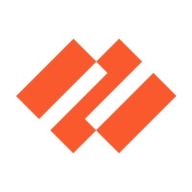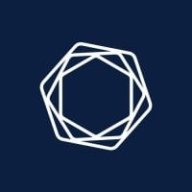

Tenable Security Center and Prisma Cloud by Palo Alto Networks compete in the field of cybersecurity solutions. Tenable Security Center appears stronger in vulnerability management, while Prisma Cloud excels in cloud security across multi-cloud and hybrid environments.
Features: Tenable Security Center is notable for vulnerability scanning, with strong reporting and dashboards. It offers Asset discovery and policy customization for large-scale environments. Prisma Cloud is distinguished for cloud security posture management, container security, and automation capabilities, covering multi-cloud and hybrid setups.
Room for Improvement: Tenable Security Center could enhance report flexibility, integration, and simplify web scanning. Its dashboard integration with other platforms could improve. Prisma Cloud faces complexity and UI navigation challenges. Pricing and integration with new technologies could improve, alongside streamlining API and onboarding processes.
Ease of Deployment and Customer Service: Tenable Security Center's on-premises deployment is supported by regionally varying robust support. Prisma Cloud offers more hybrid and multi-cloud deployment flexibility but with complex onboarding. Palo Alto's support is responsive but needs better documentation and real-time updates for seamless cloud integration.
Pricing and ROI: Tenable Security Center is seen as expensive yet justified by its capabilities, offering significant ROI by preventing breaches. Prisma Cloud's high cost reflects its premium market position but offers savings through tool consolidation and breach prevention, though setup and management costs can accumulate. Both solutions emphasize cost avoidance by reducing security incidents.
It eliminates the need for additional hardware, making it a financially and technically sound investment.
Reputation and data security are the two most important things to a financial institution.
We may have prevented a security breach with remediation of the findings.
If we cannot adjust how to operate the solution, then it becomes very difficult, so hearing and initial tuning are very important.
Through the use of Tenable Security Center, my clients achieve more efficient patching and gain visibility and understanding of security operations, leading to improved resilience and infrastructure insight.
They can respond with technical documentation or pass on the case to the next level because it requires the development of a new feature or changing a feature due to a bug.
One is always available.
For issues rated as a high priority, they provide assistance within one to two hours.
Longer response times and less thorough assistance.
It's very scalable and very easy to use.
It's scalable.
The scalability is also a 10 out of 10.
I can scale it extensively with the use of agents, allowing scanning in restrictive environments and loosely connected devices.
Scalability is a bit limited with Tenable Security Center.
I would rate it a ten out of ten for stability.
Prisma Cloud is a stable platform.
The solution is stable and is capable of covering large enterprises.
The stability of the solution is outstanding.
From a developer's perspective, especially for organizations like banks developing their applications, ensuring API security before deploying them to the cloud is crucial.
Prisma Cloud is an excellent tool.
Even though documentation was available, it took a while for a new person to understand what integration meant, what will be achieved after the integration, or how the integration needed to be done on the Azure or AWS side.
It's important for Tenable to catch up on testing capabilities that are present in solutions like Qualys.
The reports and plugins for reports and scans could benefit from enhancements.
Translating reports into European languages is especially relevant in Central Eastern Europe, where clients often require reports in local languages.
The cost was not on the higher side.
That's why a lot of our clients are shifting from cloud-native to Prisma Cloud: because of its effectiveness and because it is budget-friendly as well.
The solution is very expensive.
The product is somewhat pricey, reflecting its valuable features and status as a high-quality solution in the vulnerability management market.
Tenable Security Center is quite expensive, particularly for the CEE region, causing us to lose cases due to its pricing.
The price of Tenable Security Center is not so high; it's relatively a cheaper solution.
With this product, we can monitor all the things even if they are on different clouds - and it can be done on one platform.
What I like most about Prisma Cloud is its zero-day signatures, maximum security, minimal downtime, cloud visibility, control, and ease of deployment.
All five modules are taking a preventative approach to the security of the cloud environment, from the network to the cloud, posture management and workload protection.
Tenable Security Center provides an overall score of vulnerabilities, comparing an organization with others in the same industry.
The most effective feature of Tenable Security Center for detecting vulnerabilities is its capability for critical mapping.
The most valuable features of Tenable Security Center for my clients are Vulnerability Priority Rating (VPR) and Asset Criticality Scoring.
| Product | Market Share (%) |
|---|---|
| Prisma Cloud by Palo Alto Networks | 11.3% |
| Tenable Security Center | 1.8% |
| Other | 86.9% |


| Company Size | Count |
|---|---|
| Small Business | 37 |
| Midsize Enterprise | 20 |
| Large Enterprise | 55 |
| Company Size | Count |
|---|---|
| Small Business | 22 |
| Midsize Enterprise | 10 |
| Large Enterprise | 26 |
Prisma Cloud by Palo Alto Networks provides comprehensive cloud-native security solutions. It covers dynamic workload identity, automated forensics, and multi-cloud protection, ensuring robust security across diverse cloud platforms.
Prisma Cloud delivers advanced capabilities for managing cloud security across AWS, Azure, and GCP platforms. It offers dynamic workload identity creation, real-time monitoring, and seamless integration into CI/CD pipelines. With automation, centralized dashboards, and enhanced visibility, users effectively manage security misconfigurations and vulnerabilities. While optimizing cloud environments through runtime protection and compliance, Prisma Cloud faces challenges with its navigation, pricing, and limited automation capabilities. Users seek improvements in API security, role-based access controls, and documentation quality, emphasizing the need for enhanced customization and reporting features.
What are the important features of Prisma Cloud?
What benefits or ROI should users consider in reviews?
Industries like finance and telecom rely on Prisma Cloud for managing cloud security posture and container security. Teams utilize its capabilities across hybrid and multi-cloud settings to ensure compliance and robust threat protection. Features like misconfiguration detection and runtime monitoring are critical in promoting security objectives in these sectors.
Get a risk-based view of your IT, security and compliance posture so you can quickly identify, investigate and prioritize your most critical assets and vulnerabilities.
Managed on-premises and powered by Nessus technology, the Tenable Security Center (formerly Tenable.sc) suite of products provides the industry’s most comprehensive vulnerability coverage with real-time continuous assessment of your network. It’s your complete end-to-end vulnerability management solution.
We monitor all Cloud Security Posture Management (CSPM) reviews to prevent fraudulent reviews and keep review quality high. We do not post reviews by company employees or direct competitors. We validate each review for authenticity via cross-reference with LinkedIn, and personal follow-up with the reviewer when necessary.